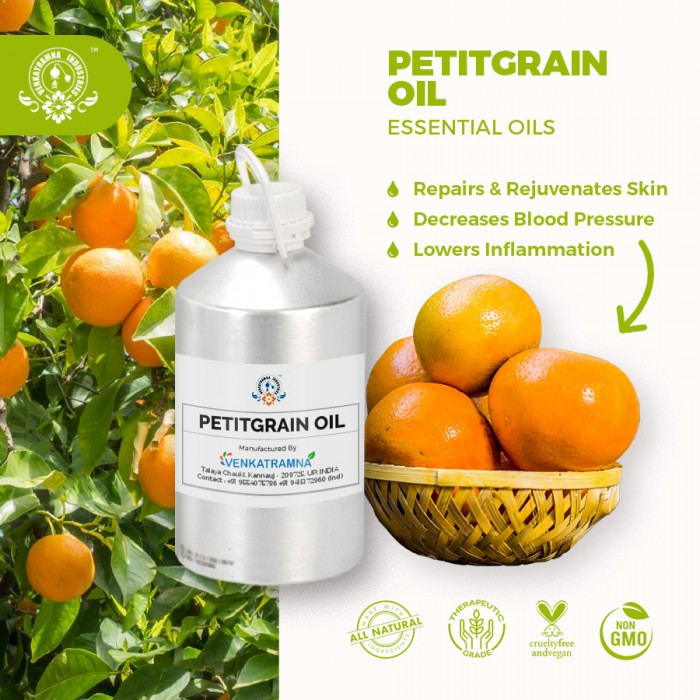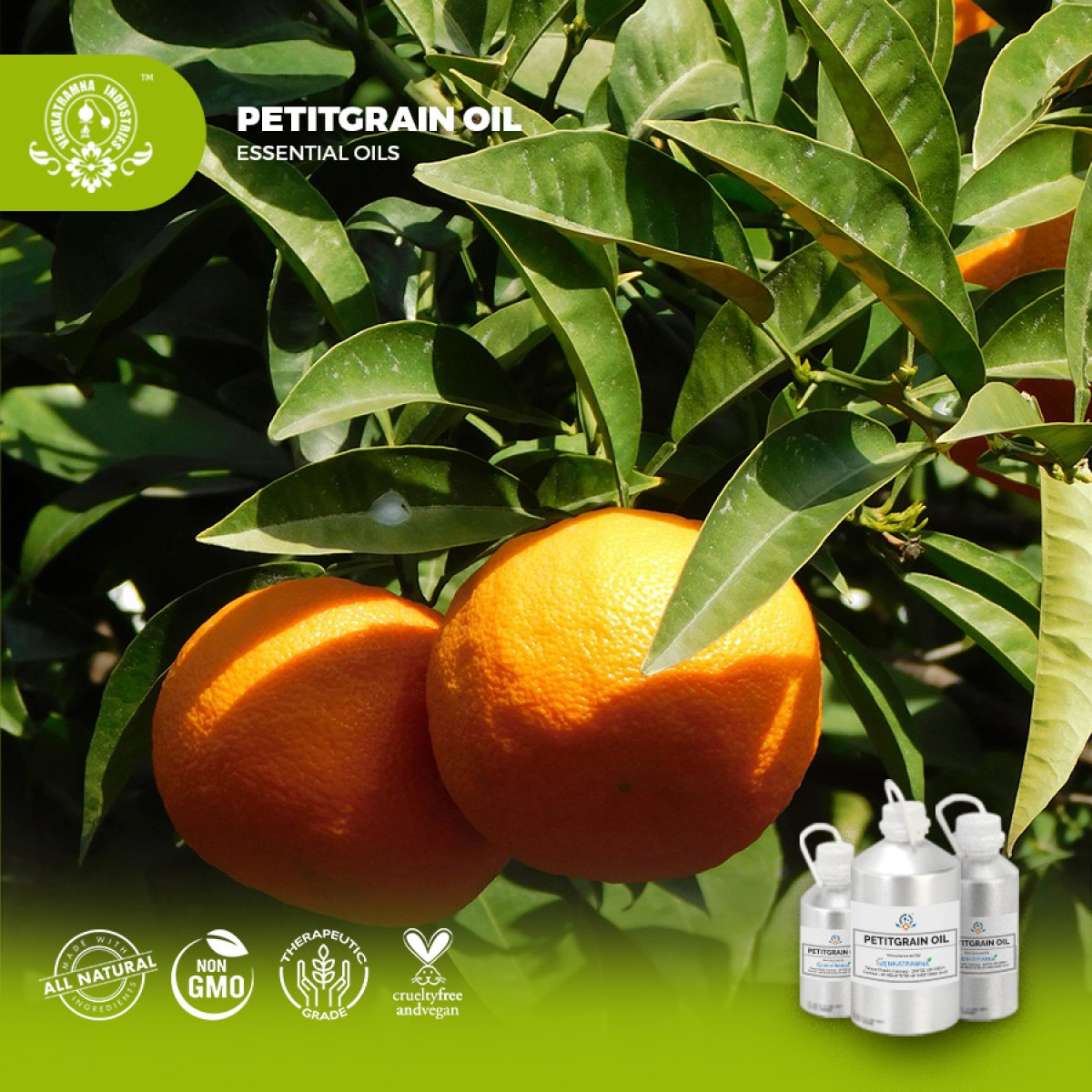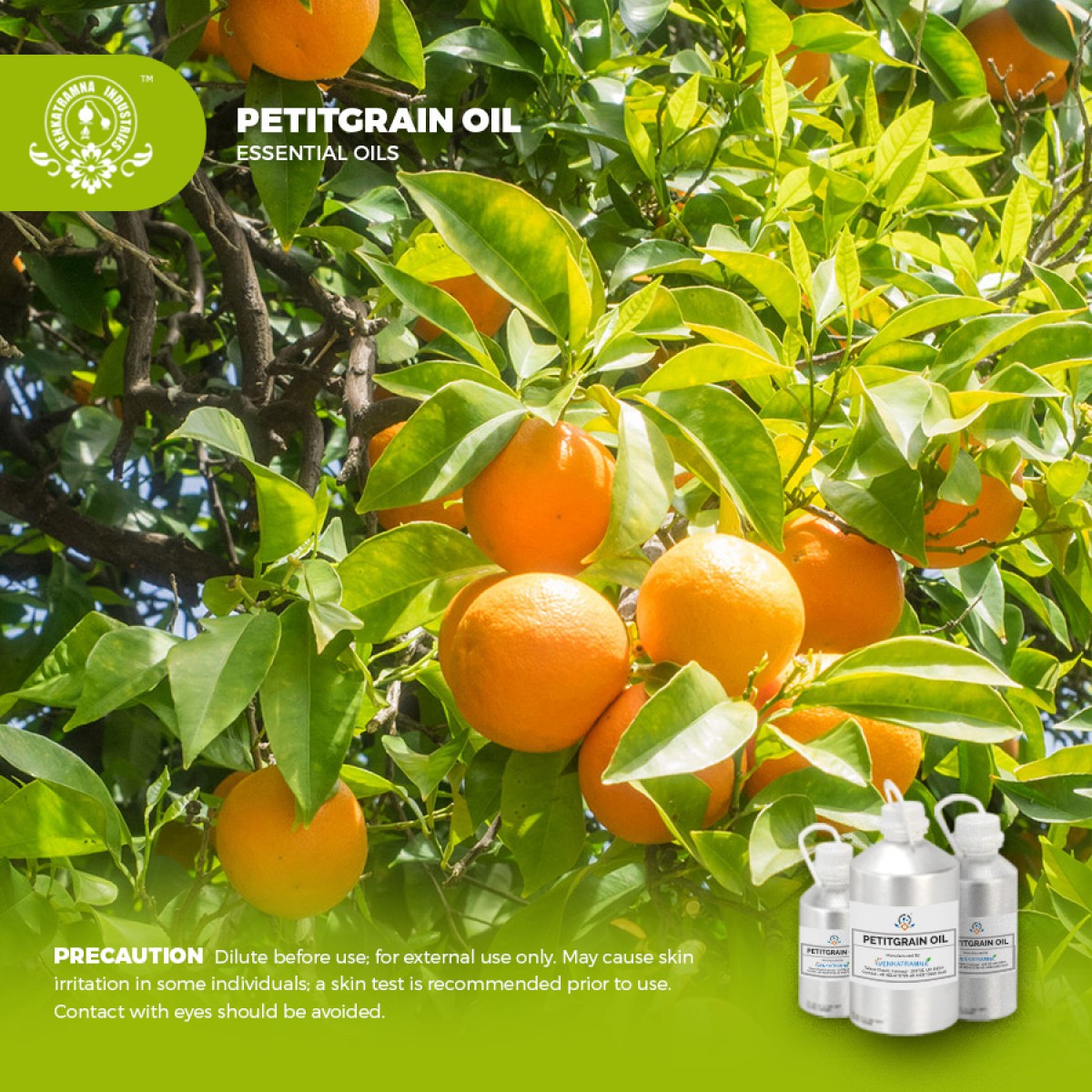Botanical Name: Citrus aurantium Common name: Bitter orange Pla Read More
|
Botanical Name: |
Citrus
aurantium |
|
Common name: |
Bitter
orange |
|
Plant
family: |
Rutaceae |
|
Genus: |
Citrus |
|
Appearance/Color: |
Colorless to Pale yellow with thin consistency |
|
Odor: |
Strong
aroma with top note like Orange blossoms with less floral, more herbaceous
with bitter undertone. |
|
Blends With: |
Bergamot, Cedarwood, Clary Sage, Geranium, Lavender, Lime,
Jasmine, Neroli, Orange, Palmarosa, Rosemary, Sandalwood and Ylang-Ylang. |
|
Origin: |
China |
|
Source: |
Fruit Peel |
|
Method
of Extraction: |
Steam
Distillation |
Petitgrain
essential oil (Citrus aurantium var amara)
is very much similar to neroli essential oil; as they are obtained from the
bitter orange tree. Petitgrain is used
in perfumery industry since the 18th century and is a classic
ingredient of the eau-de-cologne fragrance.
The Paraguayan industry of essential oil production from the bitter orange tree Citrus aurantium (L.) subsp. amara owes its existence to Benjamin Balansa who visited in 1873 and started distilling the essential oil. After the refreshing aroma it produces to soap in 1938, Paraguay produced 100,000 kilograms of Petitgrain oil. Petitgrain Natural blend essential oil is produced by steam distilling the fruit peel of Citrus aurantium plant.
DISCLAIMER
The complete range of conditions
or methods of use are beyond our control therefore we do not assume any
responsibility and expressly disclaim any liability for any use of this
product. Information contained herein is believed to be true and accurate however,
all statements or suggestions are made without warranty, expressed or implied,
regarding accuracy of the information, the hazards connected with the use of
the material or the results to be obtained from the use thereof. Compliance
with all applicable federal, state, and local laws and local regulations
remains the responsibility of the user.
The FDA has not evaluated the
statements on this website. No claims are made by Venkatramna Industries as to
the medicinal value of any products from vriaroma.com or by us. The information
presented here is for educating our customers about the traditional uses of
essential oils and is not intended to diagnose, treat, cure, or prevent any
disease. You are responsible for understanding the safe application of these products.
If you have any questions, please call or email us for further information.
As per NAHA guidelines, New Directions Aromatics
(NDA) does not recommend the ingestion of essential oils. It is imperative to
consult a medical practitioner before using Essential Oils for therapeutic
purposes. Pregnant and nursing women and those taking prescription drugs are
especially advised not to use this product without the medical advice of a
physician. The oil should always be stored in an area that is inaccessible to
children, especially those under the age of 7.
Being derived from the bitter orange tree,
Petitgrain oil has long been used in traditional health practices, for cleaning
purposes, and for its various internal benefits.
Having high antiseptic properties, it is very
useful to limit the growth of bacteria and various other distressing
microorganisms from damaging the skin. It also helps in effectively healing all
types of painful wounds, scrapes and cuts. When it is applied to the infected
area of the skin prevents formation of septic and heals the wound efficiently
and rapidly. Petitgrain
Natural blend essential oil has inbuilt Antimicrobial & Antioxidant
properties which make it most important into skin care practices.
COMMON
USAGE
·
Lowers
Inflammation & Pain
·
Reduces
Stress & Improve Symptoms of Menopause
·
Decreases
Blood Pressure & Cortisol Levels
·
Exhibits
Antimicrobial & Antioxidant Activities
·
Repairs
& Rejuvenates Skin
·
Acts
as an Anti-seizure & Anticonvulsant Agent
Ingredients:
|
S. No |
Key Constituents |
Strength (%) |
|
1 |
Dimethyl anthranilate |
48.02–52.8
|
|
2 |
g-Terpinene |
22.7–25.8 |
|
3 |
(þ)-Limonene |
9.2–10.7 |
|
4 |
p-Cymene |
4.0–4.8 |
|
5 |
b-Pinene |
01.7–03.4 |
|
6 |
a-Pinene |
1.6–2.4 |
|
7 |
b-Caryophyllene |
1.1–1.3 |
|
8 |
a-Thujene |
0.7–02.0 |
Safety
Summary
·
Hazardous:
Phototoxic at moderate risk
·
Cautions: When applied to the skin above the maximum
use level then skin must not be exposed
to sunlight or sunbed rays for 12 hours.
Maximum
dermal use level 0.17%.
Organ Specific Effects
·
Adverse skin reaction: No data found. However, Mandarin leaf oil
typically has 50 ppm bergapten which is not enough for a phototoxic reaction to
occur. But dimethyl anthranilate was phototoxic to mice at 5%, with an NOAEL of
0.5% in humans.
Systemic Effects
·
Acute
Toxicity: No data was
found. Dimethyl anthranilate and g-terpinene are slightly toxic orally, and
non-toxic dermally.
·
Carcinogenic/anti carcinogenic potential: No data was found for mandarin leaf oil, but
it contains no known carcinogens. (þ)-Limonene shows anticarcinogenic activity.
·
Germ cell
mutagenicity: no data available
·
Reproductive toxicity: no data available
·
Respiratory and
skin sensitization: no data available
·
STOT single time
exposure: no data available
·
STOT repeated
exposure: no data available
·
Phototoxicity: no data available
·
Aquatic
Toxicity: No data available
·
Bioaccumulation:
No data available
·
Mobility
in soil: No data available
·
Persistence
and degradability: No data available
·
PBT
and vPvB assessment: No data available
·
Other
adverse effects: No data available





 MSDS-_Petitgran2.pdf
MSDS-_Petitgran2.pdf




